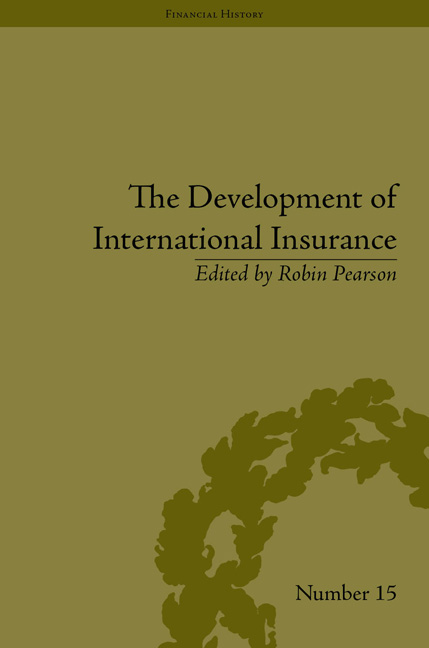Refine search
Actions for selected content:
26946 results in Economic history

The Development of International Insurance
-
- Published by:
- Pickering & Chatto
- Published online:
- 05 December 2014
-
- Book
- Export citation
Frontmatter
-
- Book:
- Federal Banking in Brazil
- Published by:
- Pickering & Chatto
- Published online:
- 05 December 2014, pp i-vi
-
- Chapter
- Export citation
7 - Iron Ore as Precedent and Example
- from Part III - Understanding Brazilian Institutions and Minerals
-
- Book:
- Mining and the State in Brazilian Development
- Published by:
- Pickering & Chatto
- Published online:
- 05 December 2014, pp 117-130
-
- Chapter
- Export citation
6 - Minerals and the Formation of Economic Ideology
- from Part III - Understanding Brazilian Institutions and Minerals
-
- Book:
- Mining and the State in Brazilian Development
- Published by:
- Pickering & Chatto
- Published online:
- 05 December 2014, pp 103-116
-
- Chapter
- Export citation
CONTENTS
-
- Book:
- Entrepreneurial Families
- Published by:
- Pickering & Chatto
- Published online:
- 05 December 2014, pp v-vi
-
- Chapter
- Export citation
CONTENTS
-
- Book:
- The Economies of Latin America
- Published by:
- Pickering & Chatto
- Published online:
- 05 December 2014, pp vii-viii
-
- Chapter
- Export citation
Index
-
- Book:
- Multinationals, Subsidiaries and National Business Systems
- Published by:
- Pickering & Chatto
- Published online:
- 05 December 2014, pp 193-199
-
- Chapter
- Export citation
3 - Banking and Government Finance
-
- Book:
- Virginia and the Panic of 1819
- Published by:
- Pickering & Chatto
- Published online:
- 05 December 2014, pp 39-56
-
- Chapter
- Export citation
8 - China and Its Energy Needs
-
- Book:
- Energy, Trade and Finance in Asia
- Published by:
- Pickering & Chatto
- Published online:
- 05 December 2014, pp 153-162
-
- Chapter
- Export citation
12 - Multinational Enterprise, Host Society and Environmental Challenges
-
- Book:
- Multinationals, Subsidiaries and National Business Systems
- Published by:
- Pickering & Chatto
- Published online:
- 05 December 2014, pp 123-132
-
- Chapter
- Export citation
4 - Important Advanced Economies: US and Japan as Development Models
-
- Book:
- Energy, Trade and Finance in Asia
- Published by:
- Pickering & Chatto
- Published online:
- 05 December 2014, pp 65-78
-
- Chapter
- Export citation
Frontmatter
-
- Book:
- Gambling on the American Dream
- Published by:
- Pickering & Chatto
- Published online:
- 05 December 2014, pp i-iv
-
- Chapter
- Export citation
8 - Life Offices to the Rescue! A History of the Role of Life Assurance in the South African Economy during the Twentieth Century
- from Part II - Life, Health and Social Insurance
-
-
- Book:
- The Development of International Insurance
- Published by:
- Pickering & Chatto
- Published online:
- 05 December 2014, pp 145-166
-
- Chapter
- Export citation
Contents
-
- Book:
- Female Economic Strategies in the Modern World
- Published by:
- Pickering & Chatto
- Published online:
- 05 December 2014, pp vii-viii
-
- Chapter
- Export citation
Part II - Life, Health and Social Insurance
-
- Book:
- The Development of International Insurance
- Published by:
- Pickering & Chatto
- Published online:
- 05 December 2014, pp -
-
- Chapter
- Export citation
Notes
-
- Book:
- Gambling on the American Dream
- Published by:
- Pickering & Chatto
- Published online:
- 05 December 2014, pp 251-282
-
- Chapter
- Export citation

Migrants and Urban Change
- Newcomers to Antwerp, 1760–1860
-
- Published by:
- Pickering & Chatto
- Published online:
- 05 December 2014
-
- Book
- Export citation
8 - Restoring and Promoting the Subsidiary's Mandate: The Post-War Expansion
-
- Book:
- Multinationals, Subsidiaries and National Business Systems
- Published by:
- Pickering & Chatto
- Published online:
- 05 December 2014, pp 75-86
-
- Chapter
- Export citation
1 - A Crisis in Confidence
-
- Book:
- Reforming the World Monetary System
- Published by:
- Pickering & Chatto
- Published online:
- 05 December 2014, pp 7-22
-
- Chapter
- Export citation
3 - The Banco do Brasil – with Maria Antonieta del Tedesco Lins
-
- Book:
- Federal Banking in Brazil
- Published by:
- Pickering & Chatto
- Published online:
- 05 December 2014, pp 59-100
-
- Chapter
- Export citation
